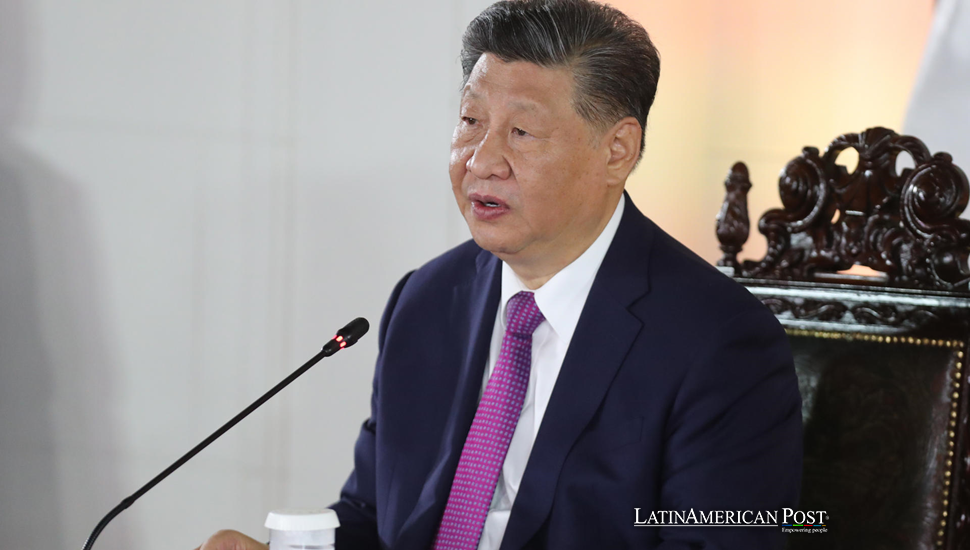Xi Jinping’s Strategic Bet on Peru’s Chancay Megaport

In a major move for Latin America-China relations, Chinese President Xi Jinping launched the Chancay mega port in Peru, a $1.3 billion investment aimed at linking South America with Asian markets. For many, this new gateway symbolizes opportunities—and concerns—in the region’s future.
A Gateway for Growth and a Symbol of Change
When Xi Jinping and Peruvian President Dina Boluarte met for the grand opening of the Chancay mega port, they focused on the project’s economic potential. The two leaders celebrated, via video link, how this development could transform trading routes and enhance Peru’s global connectivity. This was no ordinary infrastructure investment—this was part of China’s grander vision of a “21st-century Silk Road,” a modern-day pathway meant to bind continents in trade, culture, and influence.
Standing at the edge of Chancay’s port, local workers talked about how their lives would change. “My family has been fishing here for generations,” said Juan, a third-generation fisherman who sees this port as both a blessing and a challenge. “This port means more jobs and income, but it also means things won’t be the same here anymore.”
Economic Ties that Bind
China’s increasing demand for raw materials and agricultural products has opened up new economic opportunities for Latin America. Peru, a key supplier, is now poised to benefit from faster, more direct shipping to Chinese markets. The port’s first outbound shipment, carrying Peruvian fruit straight to China, is a promising start to a potentially lucrative trade partnership, as Mario Ocharan, director of the Chancay Chamber of Commerce, points out.
Xi Jinping also published an op-ed in El Peruano, Peru’s leading state newspaper, laying out an optimistic vision for Chancay. Xi forecasted that the port would eventually bring in $4.5 billion annually and create more than 8,000 jobs for Peruvians. For many locals, these numbers feel like a dream come true, one that could lift the region out of long-standing poverty. However, there are concerns about what more significant Chinese influence means for Peru’s autonomy. José, a young engineer who recently began working on the port, says, “We want prosperity, but not at the cost of becoming too dependent on China.” This sentiment is shared by many who fear that a heavy reliance on Chinese investment could lead to a loss of control over their own economic and political decisions.
Washington’s Watchful Eye
However, this surge in Chinese investment has not gone unnoticed by the United States. Latin America has been under the influence of U.S. economic policies for decades. As Chinese funding flows into critical sectors across the region, Washington is voicing concerns. During a recent conference, former U.S. Southern Command Chief General Laura Richardson raised alarms over potential military applications of the Chancay port. While Beijing has repeatedly emphasized that the port is strictly commercial, Richardson’s comments underline a new reality: China’s growing role in the Americas reshapes geopolitical tensions.
In China’s Global Times, an editorial responded, dismissing these fears as unfounded. According to the piece, Chancay was “not a tool for geopolitical competition” but a means to boost economic cooperation. For Chinese officials, the focus remains on trade and connectivity. However, some Peruvians wonder if the U.S. concerns carry a grain of truth. Carmen, a sociology professor in Lima, questions whether such investments come with hidden costs. “If China starts controlling too much of our infrastructure, do we lose a say in our future?” she asks.
A Boon or a Burden?
In rural Peru, where economic opportunities are limited, many see the mega port as a lifeline. Farmers and merchants who have struggled to find stable markets hope this new gateway will bring steady demand for their products. Raúl, a farmer growing avocados in the countryside, told Reuters that Chancay feels like a ticket to a more secure future. “For us, this means that what we grow here can reach the world,” he says, loading crates of avocados onto a truck bound for Lima. The port not only provides a direct route to international markets but also promises to boost local economies through increased employment and business opportunities.
Yet, for others, the pace of change raises more anxiety than excitement. “What happens if we rely too much on China and things go sour?” asks Fernando, a shop owner in Lima who has watched foreign interests come and go over the years. He told Reuters that “we’ve seen outside powers come in before. They bring some benefits but can leave as quickly as they came.” This sentiment is echoed by María, a local activist who worries about the potential environmental impact of the port’s construction. She fears that the rush for economic growth might come at the cost of the region’s natural resources and biodiversity.
The Long Road Ahead
With the opening of the Chancay mega port, Xi Jinping’s vision of connectivity has become a reality on the shores of Latin America. This port represents both a promise and a burden for Peru and its neighboring countries. The impact of the alliance with China—whether it brings prosperity or creates new challenges—will depend on how Peru manages this new partnership.
Also read: Crime is Latin America’s Economic Drain
As a result, workers, entrepreneurs, and families are witnessing Chancay evolve from a quiet seaside town into a bustling center. This transformation is filled with promise but also uncertainty as communities throughout Latin America strive to balance development with the lessons learned from their past. As for what the future holds, only time will tell if Chancay becomes a true gateway to prosperity or a costly dependency on an ambitious global power.




